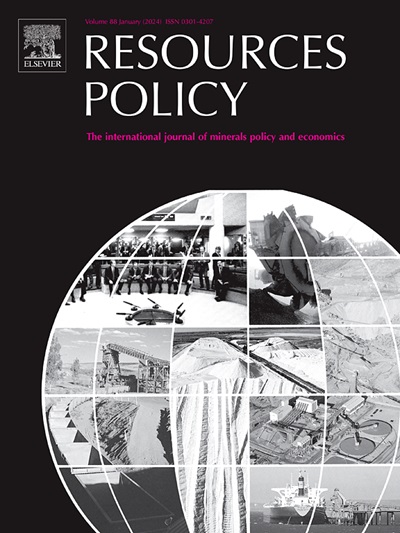Revising the ‘Economic importance’ dimension: The European framework for critical raw materials, completed and illustrated using lithium
IF 10.2
2区 经济学
0 ENVIRONMENTAL STUDIES
引用次数: 0
Abstract
In demand since time immemorial, increasingly used as intermediate consumption and at the heart of energy and digital transitions, mineral substances are vital to the functioning of economies. While all are important, not all are strategic, and even less so, critical (as lithium). The European Union depends on them. Since 2010, the European Commission has produced statistics evaluating a broad and extensible set of criticality sub-indicators integrated in a two-dimensional matrix (Supply Risk, SR, and Economic Importance, EI) and a list of critical substances based on a combination of SR and EI, updated every 3 years. This article takes a closer look at one of these dimensions, namely the EI one. Our proposed dimension, "Economic effect, EE", integrates cost of using raw materials. Articulated in coherence with EI and assessed over the most recent period, it is compared with EI for lithium. EE suggests a systematically higher criticality than EI. Lithium stands out as 4% more critical. The dynamics of its criticality, on the other hand, is non-monotonic, enriching that of EI. The article also numerically illustrates the prospective use of SR, EI and EE. In addition, an up-to-date overview of lithium (markets, uses, production costs, supply, demand, prices, stocks and trade) has been provided, both for the EU and worldwide.
求助全文
约1分钟内获得全文
求助全文
来源期刊

Resources Policy
ENVIRONMENTAL STUDIES-
CiteScore
13.40
自引率
23.50%
发文量
602
审稿时长
69 days
期刊介绍:
Resources Policy is an international journal focused on the economics and policy aspects of mineral and fossil fuel extraction, production, and utilization. It targets individuals in academia, government, and industry. The journal seeks original research submissions analyzing public policy, economics, social science, geography, and finance in the fields of mining, non-fuel minerals, energy minerals, fossil fuels, and metals. Mineral economics topics covered include mineral market analysis, price analysis, project evaluation, mining and sustainable development, mineral resource rents, resource curse, mineral wealth and corruption, mineral taxation and regulation, strategic minerals and their supply, and the impact of mineral development on local communities and indigenous populations. The journal specifically excludes papers with agriculture, forestry, or fisheries as their primary focus.
 求助内容:
求助内容: 应助结果提醒方式:
应助结果提醒方式:


